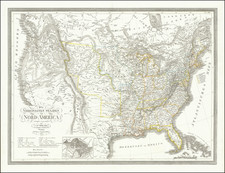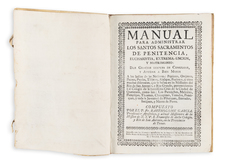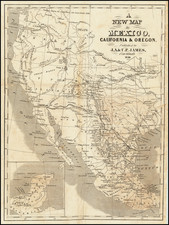Interesting map of Texas, Oklahoma Territory and Indian Territory, from the brief window of time when Oklahoma Territory and Indian Territory were two different regions.
The Coexistence of Oklahoma Territory and Indian Territory
During the late 19th and early 20th centuries, two distinct territories existed side by side in what is now the state of Oklahoma: the Oklahoma Territory and the Indian Territory. This period, visually represented on historical maps, was characterized by significant political and cultural developments.
Establishment and Duration
-
Indian Territory: Formed as a result of the Indian Removal Act of 1830, it was a designated area for relocated Native American tribes from the southeastern United States. Its existence as a distinct entity lasted until the early 20th century.
-
Oklahoma Territory: Established on May 2, 1890, by the Organic Act passed by the United States Congress, it occupied the western half of the area that was the original Indian Territory.
Land Dynamics
-
The creation of the Oklahoma Territory involved opening "Unassigned Lands" to non-Native American settlers, leading to events like the Oklahoma Land Rush of 1889. This resulted in a rapid influx of settlers and the formation of new towns and communities.
-
The Indian Territory, meanwhile, was experiencing significant changes due to federal policies like the Dawes Act of 1887, which aimed to allot tribal lands to individual Native American families, disrupting traditional landholding patterns.
Cultural and Political Landscape
-
The Oklahoma Territory developed with a mix of settlers from various backgrounds, leading to the creation of a diverse socio-political environment.
-
In the Indian Territory, Native American tribes attempted to maintain their cultural identity and political autonomy amidst increasing federal pressure and changing policies.
Path to Statehood
- The distinct period of the two territories being depicted on maps ended with the merging of the Oklahoma Territory and Indian Territory into the single state of Oklahoma, which was admitted to the Union on November 16, 1907.
This era, marked by the coexistence of the Oklahoma Territory and Indian Territory, represents a complex and transformative period in the region's history, characterized by the interplay of federal policies, indigenous cultures, and settler expansion.













![(Dallas, Texas) USAF Target Complex Mosaic-Series 25 [Sheets 0 - 4]](https://storage.googleapis.com/raremaps/img/small/87119.jpg)
![[Dallas / Kennedy Assassination] La Mappa Dell'Odio](https://storage.googleapis.com/raremaps/img/small/89006.jpg)